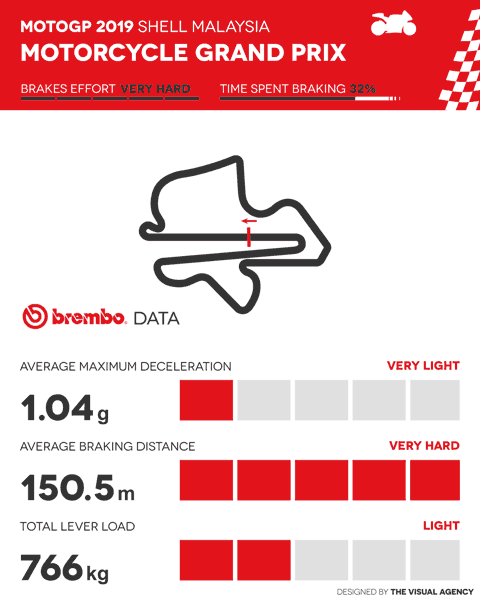For the sixth year in a row, the second-last race in the MotoGP World Championship will be held at Sepang International Circuit. The Malaysian GP is scheduled for November 1-3 on the circuit designed by Hermann Tilke, which was inaugurated in March 1999.
Located 85 km (53 miles) from Kuala Lumpur on a 260-hectare oil palm plantation, this is the second longest track in the World Championship after Silverstone and one of the most difficult for the MotoGP braking systems.
Formula 1 also raced here, but the brakes on the single-seaters were under less stress compared to the motorcycles. There are lots of braking sections for the MotoGP bikes, and the time spent braking is significant.
This combined with the tropical weather make managing the temperatures of both the brakes and the riders crucial. During last year’s race, the air temperature reached 34°C (93°F) and the tarmac hit 53°C (127°F).
In the 2016, the rain played a key role in FP2, FP4, Q1, Q2 and even during the race: Several riders tested the Brembo carbon discs to eliminate the problem of weather variations and intermittent rain.
That experimentation proved decisive for Marc Marquez and Andrea Dovizioso’s victories respectively at Misano Adriatico and Motegi, where they used carbon discs to compete in the rain.
According to Brembo technicians, who assist 100% of the 2019 MotoGP pilots, Sepang International Circuit is very demanding on the brakes. On a scale of 1 to 5, it earned a 5 on the difficulty index, the same score given to Motegi, Spielberg and Barcelona.

